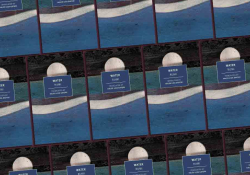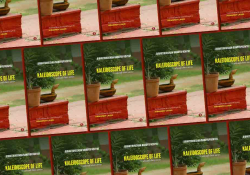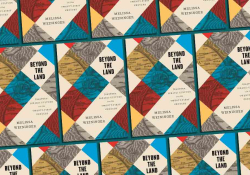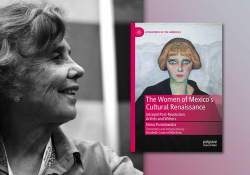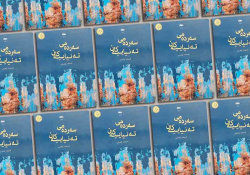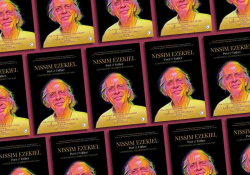Decentering World Literature: Aamir Mufti’s Forget English!

Orientalism is over. The era of our culture, history, and image being constructed, codified, and represented by Western scholars is gone. Today we tell our own stories and are given voice by our own writers. This, at any rate, is the prevalent notion about Orientalism in postcolonial societies.
But in Forget English! Orientalisms and World Literatures (Harvard University Press, 2016), a highly original, and seemingly counterintuitive, theoretical tract, Aamir R. Mufti turns conventional thinking on its head and unveils the continuing chokehold of the Orientalist knowledge revolution that we unwittingly reproduce in our literary and critical practices.
This 2016 book with an exclamatory title is divided into four chapters: “Where in the World Is World Literature?”, “Orientalism and the Institution of Indian Literature,” “Global English and Its Others,” and “World Literature from Auerbach to Said.” The present review confines itself largely to the second chapter, which deals with the subcontinent, and is written with the aim of elaborating some of the bits that were found revealing, enlightening, or even shocking.
In World Republic of Letters (2004), French literary critic Pascale Casanova traced the formation of an international literary space with three historical developments: vernacularization in the emerging nation-states of Europe (fourteenth–seventeenth centuries); the philological-lexicographic revolution of the late eighteenth century; the start of decolonization after World War II with the entry of new contestants from the Global South. But Mufti challenges this identification and demonstrates that the (forced) entry of bodies of writing from the Global South happened during the philological revolution—with the “discovery” of classical languages in India, the drafting of language trees, and translation of Arabic, Persian, and Indian works into European languages—rather than in the aftermath of World War II.
In other words, there are two phases to the emergence of world literature: first is the emergence of “national” languages and literatures in Europe, and the second is the replication of what Mufti has called “nation-thinking” across the planet as accomplished by the practitioners of Orientalism—European scholars, writers, ideologues, administrators, travelers, researchers, and teachers—on behalf of the natives.
Orientalism and the National Imaginary
Mufti sketches the ascent of nation-thinking—the conception of human societies in national-cultural terms—through the theories of German philosopher Johann Gottfried Herder and British philologist William Jones. Herder came up with the influential and transformative idea that human thought is bound in language, which in turn is bound in historical contingencies like time and place. A purveyor of historicism and a critic of Enlightenment universalism, Herder also believed that the purest and most spontaneous expression of a community is to be found in its poetic tradition, and this genius-spirit can be excavated in the primitive, original, unadulterated cultural forms of every civilization. In this way he linked thought, language, literature, and nation along a single axis and birthed the idea of national language and literature (rooted in a primitive and original cultural form).
Meanwhile, working as a philologist, William Jones wrote essays elaborating Oriental verse—poems written in Arabic and Persian—and put forth the theory that “every nation has a set of images and expressions peculiar to itself, which arise from the difference of its climate, manners and history.” Jones’s engagement with the Oriental lyric (what we know as the ghazal form) resulted in the “lyricization of poetry” in the West and transformed poetic practice on the continent.
Mufti’s book is at one level an account of how this seemingly harmless idea ultimately determined the cultural and political destinies of societies on the periphery, like the subcontinent.
As an aside, I am tempted to include here Mufti’s marking of the trajectory of the ghazal. He recalls an ironic episode from the vernacularization of Urdu when reformist literary historian Muhammad Husain Azad, author of Aab e Hayat, mounted a modernist critique of the Urdu poetic tradition. In his critique, Azad painted the ghazal as an outdated form incapable of giving expression to modern subjectivity, and he exhorted his contemporaries to learn from Western lyric. In other words, even though the modern West acquired lyric sensibility by its encounter with the Oriental lyric, the form came back with an ironic twist to become a benchmark for those very Oriental writing traditions! Later on, Mufti shows how Azad’s literary history brought about the end of the traditional genre of tazkira (an anthology of commentaries on the lives of poets), another casualty of the violent process of world literature, which required a formal, national literary history (rather than an informal genre like tazkira) for insertion into world literary space. About the Western assimilation of ghazal, Mufti asks: How can we rethink the category of world literature that does not erase the complex history of a genre like ghazal, a poetic form that is transnational and translingual?
But coming back to the idea of nation-thinking, Mufti’s book is at one level an account of how this seemingly harmless idea–of distinct civilizations or nations possessing their own literary traditions in which they express themselves and through which they can be understood—ultimately determined the cultural and political destinies of societies on the periphery, like the subcontinent. Emergent European ideas about historical particularity were applied to ancient bodies of text, which were categorized as unique traditions of one civilization or the other. In other words, these ancient and overlapping bodies of writing underwent a process of historicization and got classified, through the logic of Orientalization, as “literature” of this or that nation.
As Herder’s ideas swept across Europe, and as the marginal nations of the continent (like Hungary and Poland) started to proclaim their cultural independence by elaborating their own “national” literatures, the national literatures for the colonized societies were being decided by Orientalist scholars. This ascription of national language and literature, which was considered authentic representation of a people, culminated in the political form of the nation-state. And this is the most radical insight in this book: in the case of the subcontinent, it is not the nation-states that gave birth to national literatures; it is the other way around!
The Invention of India
Mufti stresses that the idea of India as a single cultural entity, a unique civilization with its roots in Sanskritic culture, was first postulated on the terrain of literature via the very invention of an “Indian literature.” India went from being a geographical region housing complex histories and multiple, overlapping cultures to being a “civilization.” This idea of India being a nation then disseminated across the continent of Europe through channels of cultural and literary transmission. This was before British imperial rule encompassed the whole of the subcontinent, and before the formation of a pan-subcontinental nationalist class that launched the freedom struggle.
The British came to know India through the Persian language initially, and only later in the eighteenth century did they “discover” Sanskrit. British Orientalist scholars were confronted with linguistic and cultural complexity of “seemingly infinite proportions.” So they went about rearranging it according to the demands of the emerging world literary space.
Mufti stresses that the idea of India as a single cultural entity, a unique civilization with its roots in Sanskritic culture, was first postulated on the terrain of literature via the very invention of an “Indian literature.”
One feature of this Orientalist rearrangement was classification by means of canonization; ascribing canonical status to certain languages and texts, thus establishing rules, regulations, standards, and frameworks for later assimilation of contemporary writers. It means that a force, invisible until now, has guided the development of literature in the former colonies. As we will see later, this canonization had repercussions beyond the spheres of language and literature.
The process started with the translation in 1791 of the first millennium CE text Śakuntalā. Such translations brought “textual India” to the intellectual and aesthetic debates that were internal to Europe. They also painted and locked in imagination an image of the Oriental society, which then became available to native intelligentsias in their modernity. For example, Germans labeled Kalidasa, the author of Śakuntalā, the “Indian Shakespeare,” and suddenly the emergent nationalist intelligentsia started to trumpet Śakuntalā as “their” great contribution to world literature. This effect was so total that when Rabindranath Tagore felt the need to extol the greatness of Śakuntalā, he did so on the authority of German poet-critic Goethe.
In other words, Sanskritic culture was instituted as the singular classic culture of the Indian subcontinent. William Jones’s theories of poetic genius and cultural difference got applied to Sanskrit, which was indigenized as Indian. As can be guessed, the continual and living Indo-Persian tradition in this schema turned out to be a “nonnational” and nonindigenous cultural imagination—a culture without a nation, as Sanskrit got assigned to India and Persian went to Iran.
Birth of a New Language
Mufti elaborates two phases of Calcutta Orientalism: the discovery of Sanskrit and the indigenization of Hindi. Vernacularization in India (which was part and parcel of the Orientalist project) displaced the Indo-Persian cosmopolitan culture, which had now become nonindigenous and nonnational. Through the printing presses of educational institutions, Hindi was invented as the purified, standardized language of this newly invented India. Urdu, which carried traces of Indo-Persian culture, became at odds with the idea of India—an idea sustained by the newly furnished Hindi and rooted in the recently “discovered” Sanskrit.
Fort William College, which played a critical role in the second phase, was structurally divided into European “professors” and native munshis (scribes). The following excerpt will help the reader understand vernacularization and the formal split of Urdu-Hindi:
Under the explicit instructions of Gilchrist, appointed professor of Hindostani in 1800, these individuals [the munshis] produced, for use as textbooks in the linguistic education of the young British recruits of the East India Company, a handful of prose works in two distinct forms of the North Indian vernacular, to be called “Hindi” and “Hindostani,” which Gilchrist viewed as separate Hindu and Muslim languages, respectively, the one with Sanskrit as lexical source and the other with Persian and Arabic.
While the above effort was carried out for the education of young British officers for the explicit purpose of colonial governance, there existed another stream of education for the young urban middle-class natives who were to become part of the emerging “colonial-nationalist” class. They were introduced to the works of such thinkers as Thomas Carlyle, whose essay on German literature called for the production of “national literature” that could represent one’s way of life and “force its way abroad.”
After being instructed in the procedures of nationalism-Orientalism, the newly emerged colonial intelligentsia needed a new language that is (a) distinct from existing speech forms and (b) distinct from the literary practice of precolonial elites. And this resulted in the formation and dissemination of a new national linguistic register called Hindi, and the forced classification of existing bodies of writing into Hindi and non-Hindi ones. National consciousness, Mufti asserts, is an Orientalized consciousness.
Mufti studies the formation of nationalist intelligentsia that took shape in the late nineteenth century. When this pan-subcontinental nationalist force emerged, it found itself in possession of a ready-made “Indian literature”—language, literature, and culture configured in nationalist terms by Orientalist scholars. In the first modern intellectual culture of India—of the Bengali Hindus—the place and authority of translated (and now canonized) ancient texts like Śakuntalā suddenly elevated, even though they mattered little in their precolonial cultural imaginaries. Similarly, the Bhagavad Gita was canonized as the core spiritual text for all Hindus, which allowed Gandhi to trumpet the Gita as the Hindu counterpart to Islamic Qur’an and Christian Bible.
A Language in Search of a Nation
In the introduction to the book, Mufti declares that the vernacular (Hindi or Urdu) can’t be used as an autonomous space to mount a critique of the universal (in this case global English), because the vernacular itself has been constituted by the universal, as we’ve seen above.
This indigenization of Hindi resulted in two groups with separate social imaginaries among the urban middle class—one in possession of an indigenous language and literature (i.e., Sanskrit, or an Orientalized construction of it) and the other without it. This created the dialectic of indigenous and alien, Hindu and Muslim. To put it more starkly, before there was a political and geographical split in the subcontinent, the fissure was created in the realm of knowledge—in the readjustment of Indian languages and literature—and this split was driven by the imperative of world literature to assemble and insert in its space distinct literary traditions of distinct people.
Both Hindu and Muslim nationalists relied on the same morphological ground of khari boli to invent or standardize a new language—a language that was to become “indigenous” to respective communities (Hindi for Hindus, Urdu for Muslims). More precisely, the laborious task of creating two distinct language identities was initiated by Orientalist scholars and carried on by Indian nationalists and Muslim separatists.
World Literature and the Postcolonial Condition
In the third chapter that deals with the global hegemony of English, Mufti notes that English—both as a language and a cultural system—has assimilated non-Western cultures of writing and created a situation where if today we want to read a Turkish-language novel, we can access it only through its English translation. This is unlike a century ago when Iqbal could write much of his poetry in Persian while residing in India and still be read and recognized, as Persian was part of the multicultural and multilingual milieu of the subcontinent.
Mufti also elaborates how extensive and diverse cultures of writing have been reduced to narrowly conceived “ethno-national spheres.” For example, both modern Hindi and modern Kemalist Turkish were instituted through a process of de-Persianization and de-Arabization, respectively, and this violent vernacularization was enacted in linguistically diverse and multicultural societies. He demonstrates that even though historicist-Orientalism emphasized difference, it did so in order to establish the same manner of difference. He adds to this point in the epilogue, declaring that one of the facets of world literature in its current form is the “production and management of difference.”
Both modern Hindi and modern Kemalist Turkish were instituted through a process of de-Persianization and de-Arabization, respectively, and this violent vernacularization was enacted in linguistically diverse and multicultural societies.
The chapter also offers an insightful analysis of the South Asian anglophone novel and its incorporation of vernacular speech forms, a point I will refrain from elaborating here due to constriction of space. [Editorial note: On this point, see S. Shankar’s “Writing beyond English.”]
But let me close with the image of a universal library, employed by Mufti at multiple points in the book, to understand the nature of world literature. In the architecture of the Western universal library—which can be taken to mean any major library in the West—non-Western texts hold a marginal presence. In such libraries, Western humanistic culture makes up the dominant component, reducing non-Western texts (translated and canonized through Orientalist logic) to a periphery; the continuing condition that once led Macaulay to declare that “the whole native literature of India and Arabia” could be judged by “a single shelf of a good European library.”
One of the tasks Mufti has set up for himself in this book is to reimagine world literary relations “without a permanent center.” To what extent has he succeeded in this effort is for the reader to find out.
Lahore, Pakistan

